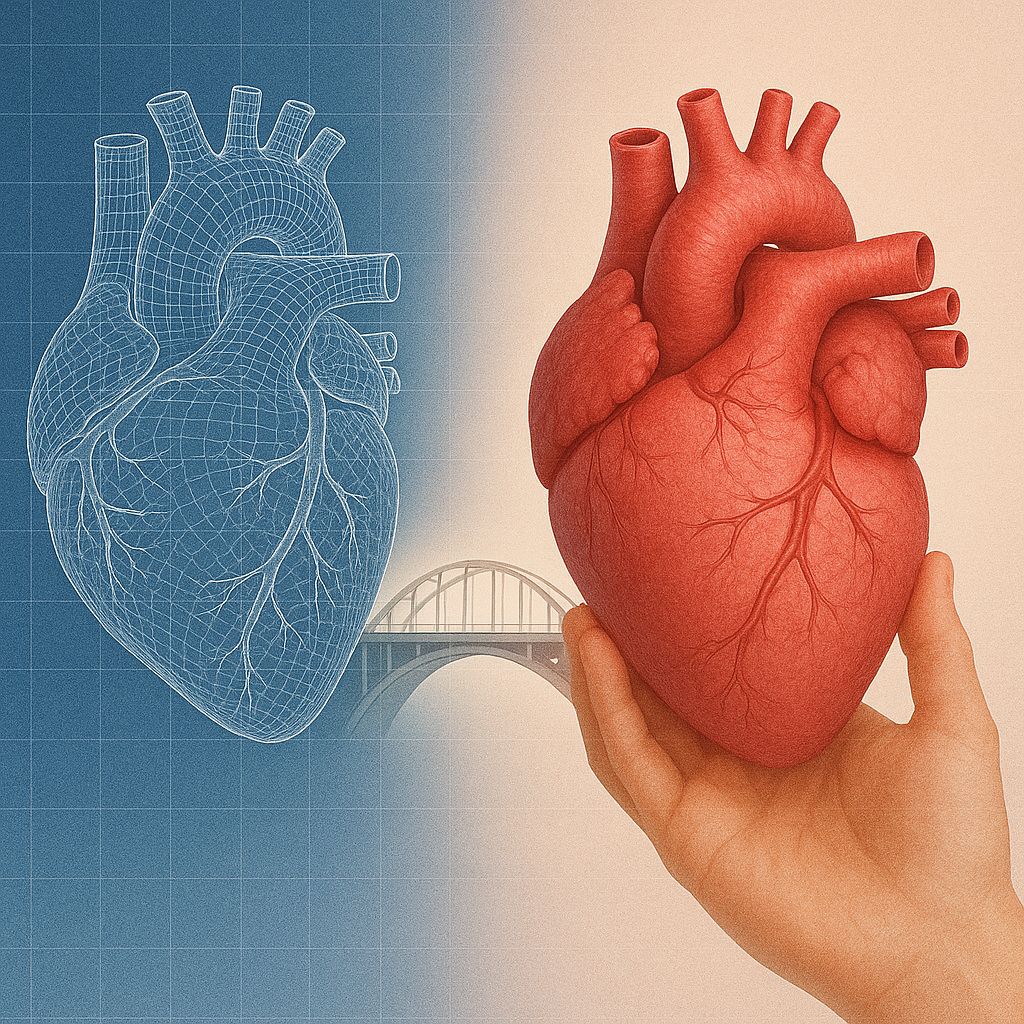Table of Contents
- The Engineering Backbone: Precision, Performance & Compliance
- Why Empathy Matters in Device Design
- Human-Centered Engineering: A New Approach
- Case in Point: Cardiovascular Devices in India
- Bridging Compliance with Compassion
- Final Thoughts
For decades, the cardiovascular device industry has thrived on precision engineering — crafting stents, catheters, and valves that save millions of lives each year. But as healthcare evolves from being disease-focused to patient-centered, there’s a critical realization emerging: engineering alone isn’t enough.
To create devices that truly serve patients and clinicians, we must balance technological sophistication with emotional intelligence. This is the new frontier — where engineering meets empathy in cardiovascular design.
The Engineering Backbone: Precision, Performance & Compliance
There’s no doubt that cardiovascular devices demand the highest standards of engineering. Whether it’s a balloon catheter navigating arterial bends or a drug-eluting stent combating restenosis, each product must meet intense performance metrics.
Indian manufacturers, bolstered by the PLI scheme and growing exports, are rising to global standards. As per Invest India, India’s medical device sector is expected to grow at 28% CAGR, with cardiovascular equipment making up a large part of that surge.
But amid this technological race, a key question is being asked more often:
“Does the patient feel understood, not just treated?”
Why Empathy Matters in Device Design
Cardiovascular patients aren’t just data points — they’re individuals navigating fear, uncertainty, and often lifelong care. For them, the difference between a well-designed device and a poorly designed one isn’t just comfort — it’s confidence, recovery speed, and mental well-being.
In a 2022 survey by Deloitte, 78% of patients in cardiac rehab programs reported that ease-of-use and perceived safety of medical devices significantly affected their compliance with post-op treatment.
Take catheters, for instance. An ultra-flexible, smooth-surfaced catheter with improved haptic feedback isn’t just a technical achievement — it reduces discomfort, shortens procedure time, and improves the patient’s post-op experience. That’s empathy in action.
Human-Centered Engineering: A New Approach
Human-centered design — once the domain of consumer products — is now being applied to medical devices. The idea is simple but powerful:
Design with, not just for the user.
This involves:
- Ethnographic research with patients and doctors
- Prototyping with real-world feedback loops
- Prioritizing ease of navigation, tactile feel, and safety cues
- Creating devices that consider the context of use — not just the technical specs
Global med-tech leaders now conduct co-design workshops with clinicians, while some Indian innovators are bringing rural healthcare workers into product testing to understand deployment challenges in low-resource settings.
Case in Point: Cardiovascular Devices in India
In India, affordability and accessibility are just as important as performance. A high-end catheter with world-class tech won’t make an impact if it can’t be used in tier-2 or tier-3 hospitals.
This is where empathetic engineering plays a role:
- Color-coded connectors for ease in high-pressure emergencies
- Modular catheter kits designed for faster training
- Instruction-free packaging with visual cues for field deployment
These small design choices have big human impacts. It’s not just about life-saving — it’s about life-improving.
Bridging Compliance with Compassion
Regulatory authorities, too, are recognizing this shift. The CDSCO under India’s Medical Devices Rules (MDR) 2017 now mandates usability documentation and post-market surveillance — encouraging manufacturers to think beyond just approval, and toward long-term impact.
Globally, standards like ISO 14971 (Risk Management) and IEC 62366 (Usability Engineering) emphasize human factors engineering — bridging the clinical and emotional needs of users.
Final Thoughts
Great engineering saves lives. But great design transforms experiences.
As India advances as a manufacturing hub for cardiovascular devices, there’s a unique opportunity: to not only build cutting-edge products but to lead with empathy, ensuring that innovation serves both the heart and the human.
By integrating user insight, contextual design, and emotional awareness into engineering, we can bridge a critical gap — and create cardiovascular devices that are not just smart, but truly sensitive.

